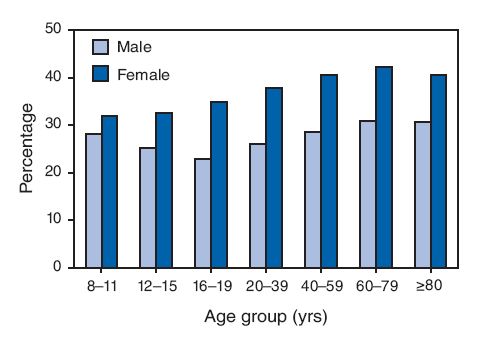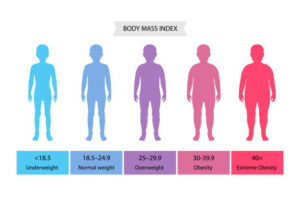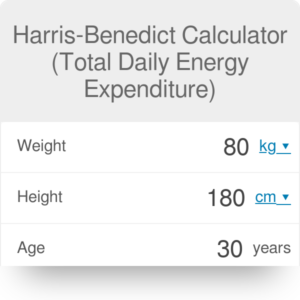This body fat calculator will help you figure out what proportion of your entire body weight is made up of fat. This is a great location to find out what your body fat percentage is if you’ve ever wondered. We’ll go through not just why this information is important, but also how to calculate your body fat (including several alternative ways) and offer you some basic advice on how to lose weight.
The composition of the human body
Six elements make up more than 98 percent of the human body: oxygen, carbon, hydrogen, nitrogen, calcium, and phosphorus. Potassium, sulfur, sodium, chlorine, and magnesium account for about 1% of the total. The 11 most significant non-trace elements are listed below.
Water is the most abundant molecule in the human body, accounting for around 65 percent of its mass, followed by proteins and lipids. Hydroxyapatite, polysaccharides, and nucleic acids are some of the other molecules with significant mass.
What is body fat?
It’s actually adipose tissue, which stores energy in the form of lipids while also cushioning and insulating your body. Essential and storage body fat are the two forms of fat that your body retains. The former is required for the maintenance of life and reproductive activities.
Because of childbirth and hormonal activities, women’s essential body fat is much greater. The bulk of additional stored fat is referred to as storage body fat. This isn’t to say that this form of body fat isn’t beneficial; a portion of it protects your abdominal and internal organs.
How to calculate body fat?
With our body fat % calculator, you may assess your body composition. Remember that no calculator, no matter how sophisticated, can substitute for a trip to the doctor’s office. This result can only be used as a guide; it can only notify you if your body fat % is dangerously high, but there’s no need to be concerned if it differs little from the ideal value.
To determine your body fat %, you’ll need the following information:
- Your age & gender
- Weight: simply weigh yourself. You will get the most accurate result weighing yourself in the morning, before breakfast, and without clothes on.
- Height: stand straight, and measure the distance from the floor to the top of your head. Remember – no shoes!
Once you’ve gathered all of your information, enter it into the body fat calculator. If you’re curious about how it works, here’s the formula:
Body fat % = –44.988 + (0.503 * age) + (10.689 * gender) + (3.172 * BMI) – (0.026 * BMI2) + (0.181 * BMI * gender) – (0.02 * BMI * age) – (0.005 * BMI2 * gender) + (0.00021 * BMI2 * age)
Where:
- Gender value: male = 0 and female = 1
BMI = weight/ height² = kg/m²
The American Diabetes Association has approved this equation. It was tested on 6,510 persons and found to have a 4.66 percent estimated inaccuracy.
Remember that owing to the diversity of the population’s body types, the estimation may not be 100 percent correct! A person who is exceptionally muscular, for example, would have a high weight and BMI, yet we cannot call him or her fat.
Try our Navy Body Fat tool and Army Body Fat tool if you want more thorough and precise estimates!
Is my body fat percentage normal?
You should compare your body fat % to the acceptable numbers after you’ve computed it. The American Council on Exercise has compiled a list that displays the average percentages in various groups.
- Essential fat: 10–13% (women), 2–5% (men)
- Athletes: 14–20% (women), 6–13% (men)
- Fitness: 21–24% (women), 14-17% (men)
- Average: 25–31% (women), 18–24% (men)
- Obese: 32%+ (women), 25%+ (men)
According to this research, if your body fat percentage is less than 31% for women and 24% for males, you are in the normal range and need not be concerned. Higher levels of body fat may be harmful to your health.
The graph below depicts the average body fat percentages of Americans from 1999 to 2004 based on samples. It comes from the United States National Health and Nutrition Examination Survey.

Why should I control my body fat?
To control hormone synthesis, you’ll need somebody fat. An excessive amount of body fat, on the other hand, can lead to a variety of health issues, including:
- Obesity and excessive body fat levels can cause high blood pressure and high amounts of bad cholesterol, both of which are risk factors for heart disease. Strokes, the third leading cause of mortality in the United States, can occur in severe situations.
- Male hormone issues: a high degree of body fat in a woman’s body can cause an overproduction of male hormones, resulting in facial hair development and acne.
- Type 2 diabetes is caused by excess body fat. There’s a significant link between diabetes and being overweight; those with a high BMI and a high body fat percentage are at the highest risk of getting type 2 diabetes.
- Complications of pregnancy: Women with excessive body fat levels are more likely to give birth prematurely or to have children with health issues, such as obesity. They’re also more likely to require a C-section.
Alternative methods of measuring body fat
If you search for “how to calculate body fat” on your search engine, you’ll find that there are several techniques for calculating body fat %. In reality, different calculators employ a variety of different formulae. Alternative ways can be found in the list below.
- Underwater weighing
- Skinfold method
- From BMI
- Ultrasound
How to reduce body fat?
Body fat reduction is not the same as weight loss. Lowering your calorie consumption and hoping for the best isn’t enough. We’ve outlined a few basic guidelines for you, but it’s always a good idea to see a dietician before embarking on any new diet.
- Long-term goals: You should aim to lose body fat over time, beginning with modest activities and progressively increasing their intensity. If you are very overweight, you should start with the most fundamental kind of exercise: walking.
- Lift weights and do aerobic activities at the same time. Changing up your workouts will prevent your body from adjusting and result in speedier fat loss.
- Plan a healthy diet that is low in saturated fats. You’ll still need some fats, but choose for oils rather than butter. In the explanation of our calorie calculator, you may learn more about a balanced diet.
- Don’t go too far! If you eat too little, you may injure yourself. Our BMR (Basal Metabolic Rate) calculator will tell you how many calories your body need to survive.
- Make sure you get enough water. If you exercise often, you lose water first, so staying hydrated is important. You can also drink tea.
- Select appropriate foods. Sweets, candy bars, and other high-fat foods should never be consumed. Instead, eat more fruits and veggies.
- Never accept a “magic diet” plan that you found on the internet. It might be completely imbalanced and harmful to your health!
FAQ
What is a good body fat percentage?
For women, a body fat percentage of 13-31% is considered healthy, whereas, for men, a percentage of 5-24% is considered healthy. However, body fat is not the most reliable indicator of health, and as you get older, your metabolism slows, it becomes more acceptable to have more body fat.
How does fat leave the body?
When you exhale, fat largely leaves the body through the lungs. This is because the process that produces energy and carbon dioxide when fat is utilized as an energy source consumes oxygen. CO2 then enters the bloodstream and travels to the lungs. Fat is expelled by perspiration, urine, and feces.
How does the body burn fat?
When your body needs to consume stored fat for energy, it releases fatty acids into the bloodstream. They are then delivered around the body to the muscles that require them. They are broken down in the muscles, producing energy and CO2. CO2 is subsequently expelled from the body via the lungs or urine.
What does fat do for your body?
Fats are an important element of our diet because they give energy, aid cell development, and are converted into hormones. Our organs are protected from physical injury by fatty tissues, which also offer insulation. A large number of fatty tissues will operate as novel disease pathways.
Are body fat scales accurate?
Although body fat scales can be highly precise, anticipate the result to be off by roughly 5% for the best scales on the market due to the number of factors impacting the measurement. Follow their directions as carefully as possible to ensure maximum accuracy.
Do body fat scales work?
Yes, body fat scales operate and, depending on the model, have an accuracy of roughly 95%. They function by delivering a low-voltage electric current through your body and detecting the resistance. They are, however, very reliant on bodily water content, so carefully follow the directions.
How do you check your body fat?
- Skinfold calipers.
- Dual-energy X-ray Absorptiometry (DXA).
- Hydrostatic weighing.
- Bioelectrical Impedance Analysis (BIA).
- Body circumference measurements.
What is the average percentage of body fat?
Between 1999 and 2004, the average body fat percentage for a woman aged 16-19 in the United States was 35 percent, 38 percent for those aged 20-39, and 41 percent for those aged 40-59. It was 23 percent for males aged 16 to 19, 26 percent for men aged 20 to 39, and 28 percent for men aged 40 to 59.


